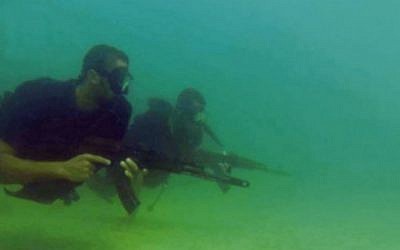IDF destroyed Hamas undersea tunnel for first time in last week’s airstrikes

The Israeli military last week bombed a previously unknown variety of Hamas tunnel in the Gaza Strip, one that extended into the sea and was apparently meant to be used by the terror group’s elite naval forces to carry out attacks from the coast, the army revealed Sunday.
On June 3, in response to repeated rocket attacks from Gaza, the Israeli Air Force conducted a series of raids in the Palestinian enclave, striking “a military compound belonging to the naval force of the terror group Hamas in the northern Gaza Strip,” the army said at the time.
On Sunday afternoon, the Israel Defense Forces revealed that the specific target of the airstrike on the compound was the naval tunnel.
The Hamas base was located approximately three kilometers (1.9 miles) from the Israeli border. The tunnel in question did not cross the border into Israeli territory, but instead extended dozens of meters underwater into the sea, according to IDF spokesperson Lt. Col. Jonathan Conricus.
The military believes the tunnel was meant to allow frogmen from Hamas’s elite naval unit to travel from their base on the shore into the sea underground, and thus undetected. From there, they could travel underwater to their Israeli targets, Conricus told reporters in a phone briefing.
“We know that it was an operational tunnel that has been used, or at least trained in, before,” he said.
The officer said the army decided to reveal that it had destroyed Hamas’s “strategic” tunnel one week later in order to “be clear what the consequences were” for rocket attacks.
“The IDF will not allow Hamas to strike Israeli targets, military or civilian, from the sea,” Conricus said.
The tunnel was discovered after “extensive intelligence work, both by naval intelligence and Military Intelligence,” he said.
Conricus would not say how long the IDF had been monitoring the tunnel before striking it, but said it had been “a while.”
He said it was a “possibility” that Hamas has more such tunnels. “We continue to monitor [the area] using all of the operational, technological and intelligence capabilities at our disposal,” he said.
Read More: Times of Israel
